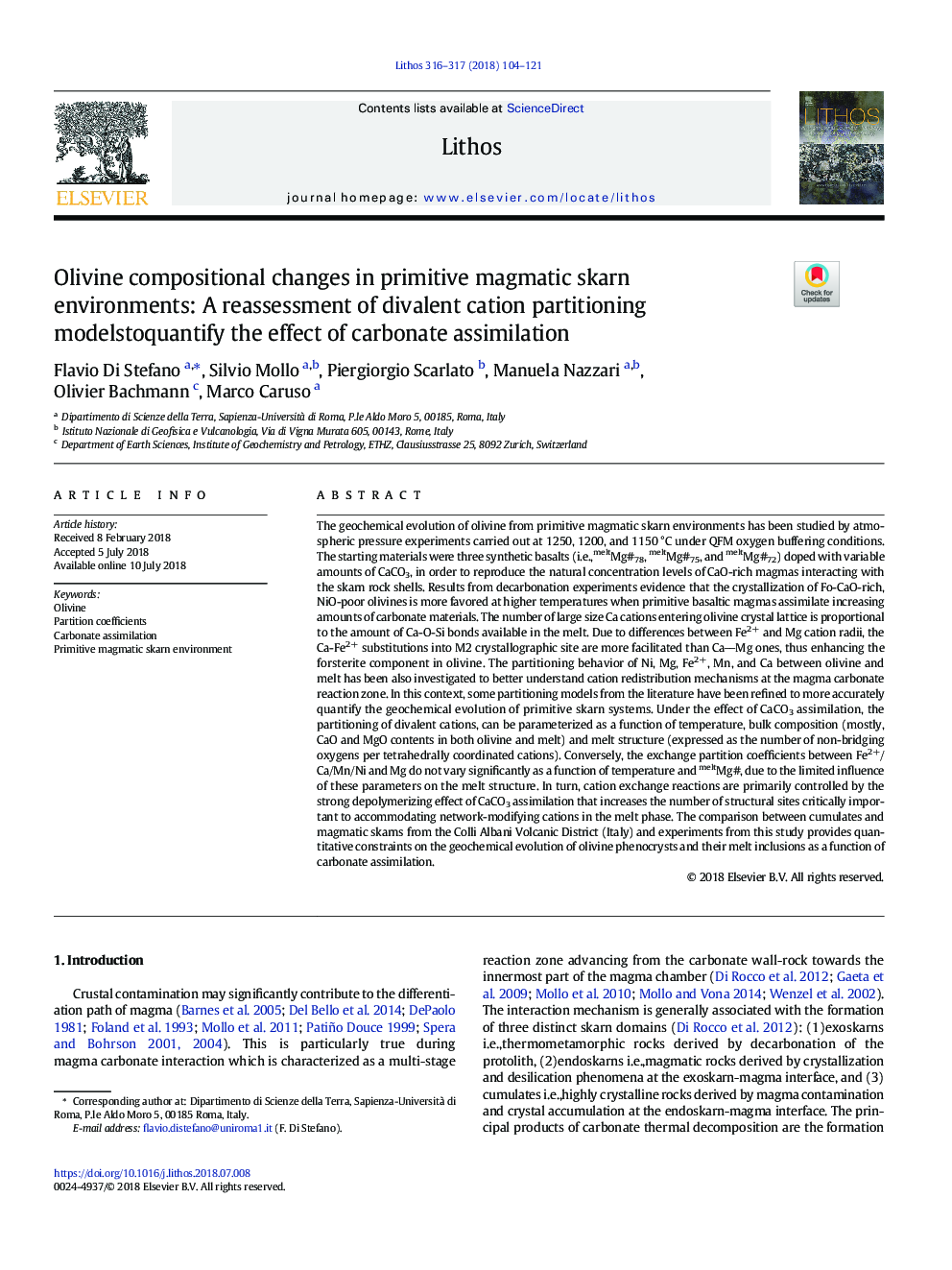| کد مقاله | کد نشریه | سال انتشار | مقاله انگلیسی | نسخه تمام متن |
|---|---|---|---|---|
| 8911511 | 1638616 | 2018 | 18 صفحه PDF | دانلود رایگان |
عنوان انگلیسی مقاله ISI
Olivine compositional changes in primitive magmatic skarn environments: A reassessment of divalent cation partitioning modelstoquantify the effect of carbonate assimilation
ترجمه فارسی عنوان
تغییرات ترکیبات اولیوین در محیط های اسکارن ماگمایی اولیه: بررسی مجدد مدل تقسیم بندی دوطرفه کاتیونی به منظور تعیین تأثیر جذب کربناته
دانلود مقاله + سفارش ترجمه
دانلود مقاله ISI انگلیسی
رایگان برای ایرانیان
کلمات کلیدی
اولیوین، ضریب پارتیشن، جذب کربنات، محیط اسکارن مغناطیسی اولیه،
موضوعات مرتبط
مهندسی و علوم پایه
علوم زمین و سیارات
ژئوشیمی و پترولوژی
چکیده انگلیسی
The geochemical evolution of olivine from primitive magmatic skarn environments has been studied by atmospheric pressure experiments carried out at 1250, 1200, and 1150â¯Â°C under QFM oxygen buffering conditions. The starting materials were three synthetic basalts (i.e.,meltMg#78, meltMg#75, and meltMg#72) doped with variable amounts of CaCO3, in order to reproduce the natural concentration levels of CaO-rich magmas interacting with the skarn rock shells. Results from decarbonation experiments evidence that the crystallization of Fo-CaO-rich, NiO-poor olivines is more favored at higher temperatures when primitive basaltic magmas assimilate increasing amounts of carbonate materials. The number of large size Ca cations entering olivine crystal lattice is proportional to the amount of Ca-O-Si bonds available in the melt. Due to differences between Fe2+ and Mg cation radii, the Ca-Fe2+ substitutions into M2 crystallographic site are more facilitated than CaMg ones, thus enhancing the forsterite component in olivine. The partitioning behavior of Ni, Mg, Fe2+, Mn, and Ca between olivine and melt has been also investigated to better understand cation redistribution mechanisms at the magmaâcarbonate reaction zone. In this context, some partitioning models from the literature have been refined to more accurately quantify the geochemical evolution of primitive skarn systems. Under the effect of CaCO3 assimilation, the partitioning of divalent cations, can be parameterized as a function of temperature, bulk composition (mostly, CaO and MgO contents in both olivine and melt) and melt structure (expressed as the number of non-bridging oxygens per tetrahedrally coordinated cations). Conversely, the exchange partition coefficients between Fe2+/Ca/Mn/Ni and Mg do not vary significantly as a function of temperature and meltMg#, due to the limited influence of these parameters on the melt structure. In turn, cation exchange reactions are primarily controlled by the strong depolymerizing effect of CaCO3 assimilation that increases the number of structural sites critically important to accommodating network-modifying cations in the melt phase. The comparison between cumulates and magmatic skarns from the Colli Albani Volcanic District (Italy) and experiments from this study provides quantitative constraints on the geochemical evolution of olivine phenocrysts and their melt inclusions as a function of carbonate assimilation.
ناشر
Database: Elsevier - ScienceDirect (ساینس دایرکت)
Journal: Lithos - Volumes 316â317, September 2018, Pages 104-121
Journal: Lithos - Volumes 316â317, September 2018, Pages 104-121
نویسندگان
Flavio Di Stefano, Silvio Mollo, Piergiorgio Scarlato, Manuela Nazzari, Olivier Bachmann, Marco Caruso,
